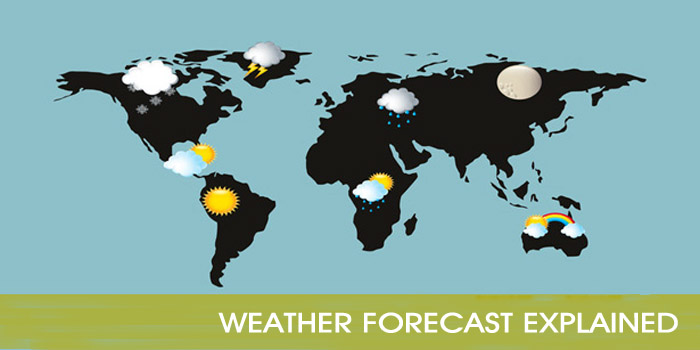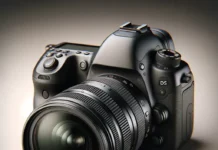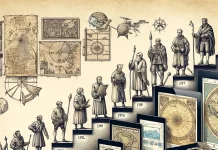
Since the dawn of time, the weather has played a vital role in daily life. From planning an outdoor reception to making summer vacation plans, many events are made or broken with a weather forecast.
Table of Contents
Weather forecast; from a curiosity to a profession
Weather forecasting, called meteorology, began as nothing more than curiosity and observations about local events. The first official weather instrument was the mercury barometer invented in 1643 by Evangelista Torricelli in Italy.
While the heritage of meteorology is sketchy at best, it is known that Benjamin Franklin was one of the first to discover that storms are not strictly local weather phenomena, but rather that they can and do move. Thomas Jefferson was recognized for noting changing weather conditions and journaling them for future reference.
Sharing weather events
With the invention of the telegraph in 1837, it became possible to share weather information across distances immediately opening the door to more discoveries about trends.
How predicting a weather forecast started
It was Vilhelm Bjerknes of Norway, however, who headed a group of meteorologists who first came up with the idea of weather fronts and other weather-related systems. It was around this same time that Christian Doppler published his findings on the Doppler Effect that would later be used to enhance radar data for meteorological predictions.
Fast forward to the 1930s when weather forecasting became a regular occurrence. The British Broadcasting Company (BBC) cites there were no “weathermen” at that time, rather just simple forecasts for short periods. It wasn't until the 1960s that the presentation of a detailed weather forecast by an actual weather presenter became commonplace.
Old Wives Tales Can't Predict the Weather
According to research by USA Today, old wives' tales are of little use in predicting the weather. The appearance of the sky, the behaviour of animals and the characteristics of clouds don't accurately predict anything for the future and with good reason.
It's not that these proverbs are necessarily all wrong, but that they most likely originated in other places and don't hold worldwide. For example, “Fair weather cometh out of the north” is found in the Biblical Book of Job. Likewise, “The north wind bringeth forth rain” can be found in the book of Proverbs. These were most likely first discovered in or around the area of the Mediterranean Sea. They would not hold true in New York City. However, these sayings might hold true in an area of the USA with similar characteristics.
It is usually better to rely on scientific methods for weather prediction than the fact that Grandmother once said a herd of sleeping cows during mid-day means rain is on the way.
Modern prediction methods for a weather forecast
As outlined by the University of Illinois weather forecast & online meteorology site, there are several different methods for predicting the weather.
The Persistence Method
The Persistence Method assumes the same weather patterns will hold true tomorrow that is evident today. If conditions are partly cloudy and 76 degrees today then it will be partly cloudy and 76 tomorrow. This type of forecasting works well for areas with few weather fluctuations like Southern California. The Persistence Method works only for short-term forecasts in areas that have virtually no changes in weather.
The Trends Method
The Trends Method uses the speed and direction of front movements, high and low-pressure centres and areas of clouds and precipitation to make predictions. Weather systems in other areas of the country can be tracked using this method to determine when they will arrive and what conditions they will deliver. Calculated using mathematical equations, this method can be accurate for short-term use. However, should the variables of the equation change (i.e., the system speeds up, wind speed changes, direction changes) the Trends Method becomes much less accurate.
The Climatology Method
The Climatology Method averages weather statistics over many years to generate a best-guess forecast founded on historical data, not current conditions.
The Numerical Weather Method
The Numerical Weather Method is the most predictable of the methods listed. Using a complex set of computerized calculations based on multiple atmospheric conditions, a forecast model is generated. While more advanced than the other methods, the Numerical Weather Method is still flawed because it lacks data from conditions over the ocean and at high mountain elevations which are not tracked.
Doppler radar & satellite imagery
The Doppler Effect was discovered by Austrian mathematician and physicist Christian Doppler. This effect notes the change in pitch resulting from a change in frequency of sound waves with movement. (For example, the change in the pitch of the siren as an ambulance drives by) Used in the weather to measure the movement of winds, Doppler radar is valuable for predicting tornados, downdrafts and other such phenomena.
Satellite imagery is derived from visual captures by satellites in space, which are then beamed back to Earth. Colour-coded images disclose views of weather trends locally, regionally, nationally or internationally.
Meteorologists have several other tools they can use in generating a forecast, but ultimately the final prediction rests in the hands of each forecaster. There is always room for interpretation and, therefore, many different forecasts – each with slight variables – can emerge.
A fast-moving mobile society needs an accurate weather forecast
As a mobile society, planning is a must. Whether we want to attend our child's soccer game or attend a business event on the other side of the country, accurate forecasts are a must. With the invention of the Internet, online weather almost instantly became more convenient and functional.
Global weather forecasts are now available based on public weather service information from offices all across the world with 96%-97% accuracy for next-day forecasts and just slightly lower accuracy rates for forecasts of up to four days according to a recent article in the International Herald Tribune. Hourly breakdowns of weather activity from small towns to major metropolitan areas in practically every country in the world are available for instant access 24 hours a day. This gives those on the go the vital information they need to plan travel, events and activities anywhere in the world.
Immediate availability of weather forecasts via smartphone apps
Online weather is available via apps and messaging on mobile smartphones, tablets, handheld mobile devices, and high-speed internet connections on computers. The accuracy level of current-day weather forecasts and the ready availability means everyone – with few exceptions – can be fully aware of what the weather has in store.





